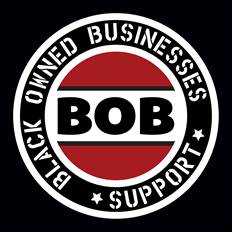
African-American children and teenagers in the United States are more than two times more likely to see a TV commercial for soda or candy than their white peers. Commercials that feature healthier snacks, like yogurt, are less likely to be seen on channels that have large Latino and African-American viewership. These research findings were recently presented in Atlanta at the National Conference on Health Communication, Marketing and Media.
“Black and Latino kids have higher rates of obesity and other diet-related diseases,” said Jennifer Harris, the lead researcher of the study who works for the University of Connecticut’s Rudd Center for Food Policy & Obesity.
Harris also said companies are purchasing ethnically-targeted advertising. These companies could be contributing to the health disparities in Black and Latino communities, which unfortunately, often continue into adult years. Among adults in the U.S., 47.8 percent of Black Americans are obese, in comparison with 42.5 percent of Latinos and 32.6 percent of white Americans, according to the Centers for Disease Control and Prevention.
Researchers have studied the strategies that companies use to market their products—267 brands from 26 major food companies, including General Mills, Hershey’s and Kraft Foods. These companies spent more than $100 million for advertising in 2013, and pledged to only promote healthier foods to children.
The researchers took into consideration how much money and television airtime these companies devoted to African-American and Spanish-speaking Latino children to determine the type of commercials they were watching. In the study, “youth-targeted” advertising referred to commercials on networks that children watched at least 1.5 times more than adults. Spanish-speaking television channels, as well as channels with an African-American audience of over 50 percent were also studied.
Overall, ads for sugary drinks, gum, savory snacks and candy were more likely to target Black and Latino consumers. On the other hand, ads for healthy dairy, water, juice, vegetables and fruit were less likely to target African-Americans and Latinos. In some cases, the same company would promote their unhealthy foods to minority communities, while healthier foods from the company would be promoted among the “general population.”
According to Amelie Ramirez, a researcher for the University of Texas Health Science Center at San Antonio, and the director of Salud America!, an obesity prevention network for Latino children, more than two-thirds of Spanish television ads directed toward Latino children promoted unhealthy foods. Meanwhile, only 3 percent of the ads promoted healthy food options for Latino kids and teens.
Only 18 percent of the brands included in the study advertised to teenagers and young children. However, of these brands, 71 percent of youth-focused advertising targeted African-American and Latino youth. The top brands that focused on Black consumers included Pop Tarts, Doritos and Skittles, which are all foods that contain artificial flavoring, unhealthy chemicals and high amounts of sugar. The study’s authors concluded that, “not one of these products would contribute to a healthy diet among young people.”
Advertisers know that teens and children have a lot of influence in their homes in terms of buying power when it comes to groceries. While parents can’t shield their children from the inundation of commercials that promote junk food, promoting healthy eating habits consistently at home could push popular food brands to improve their promotional efforts.


